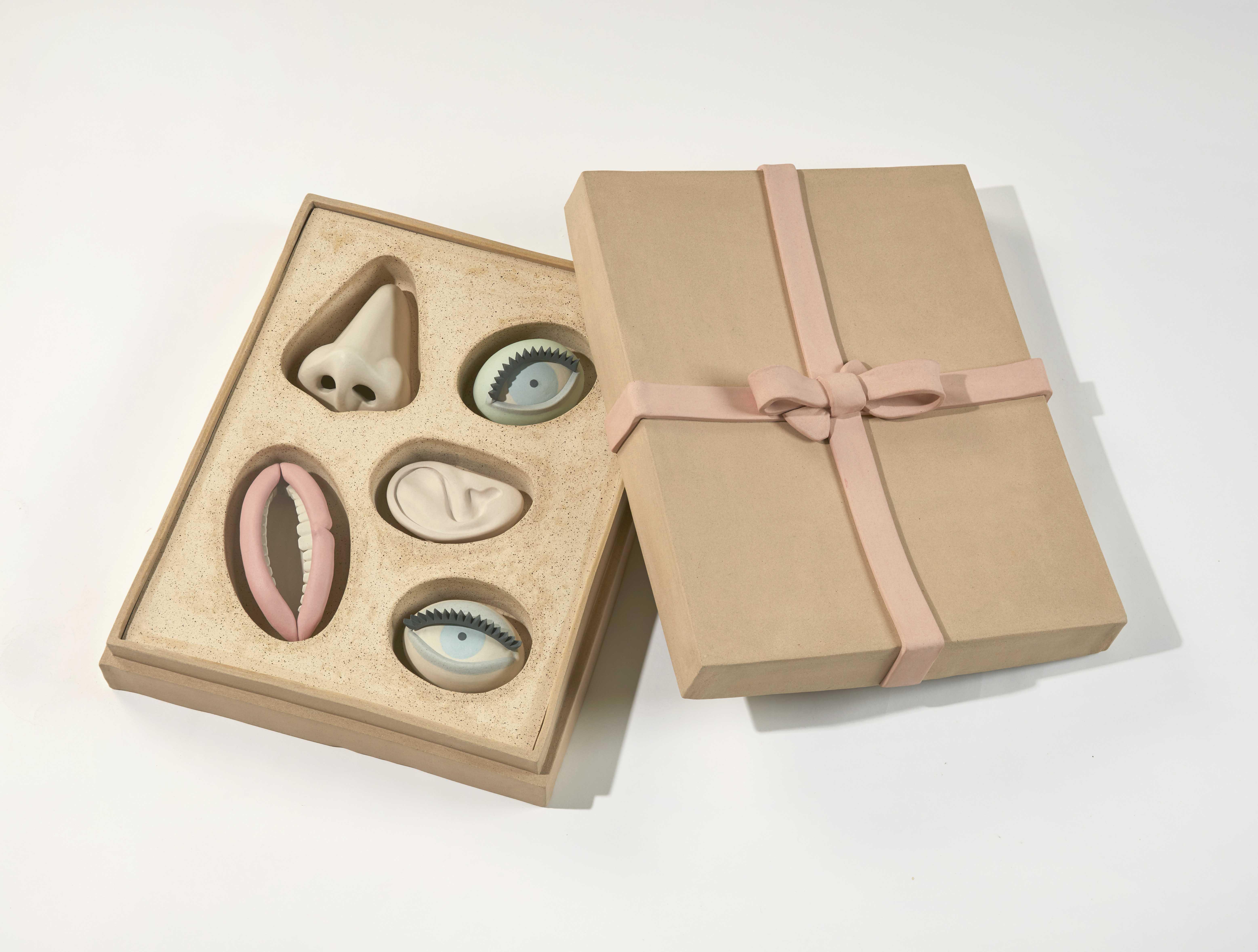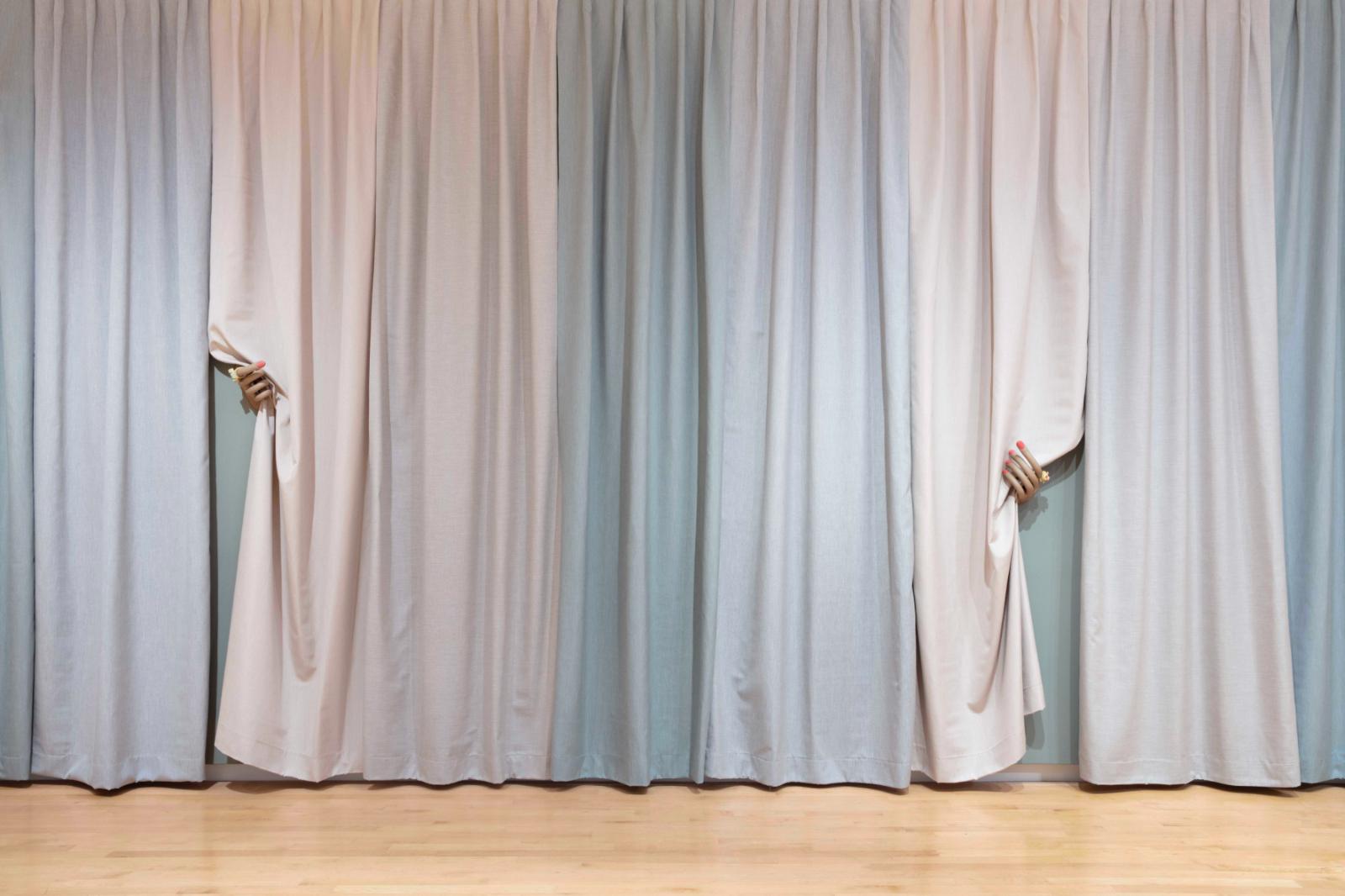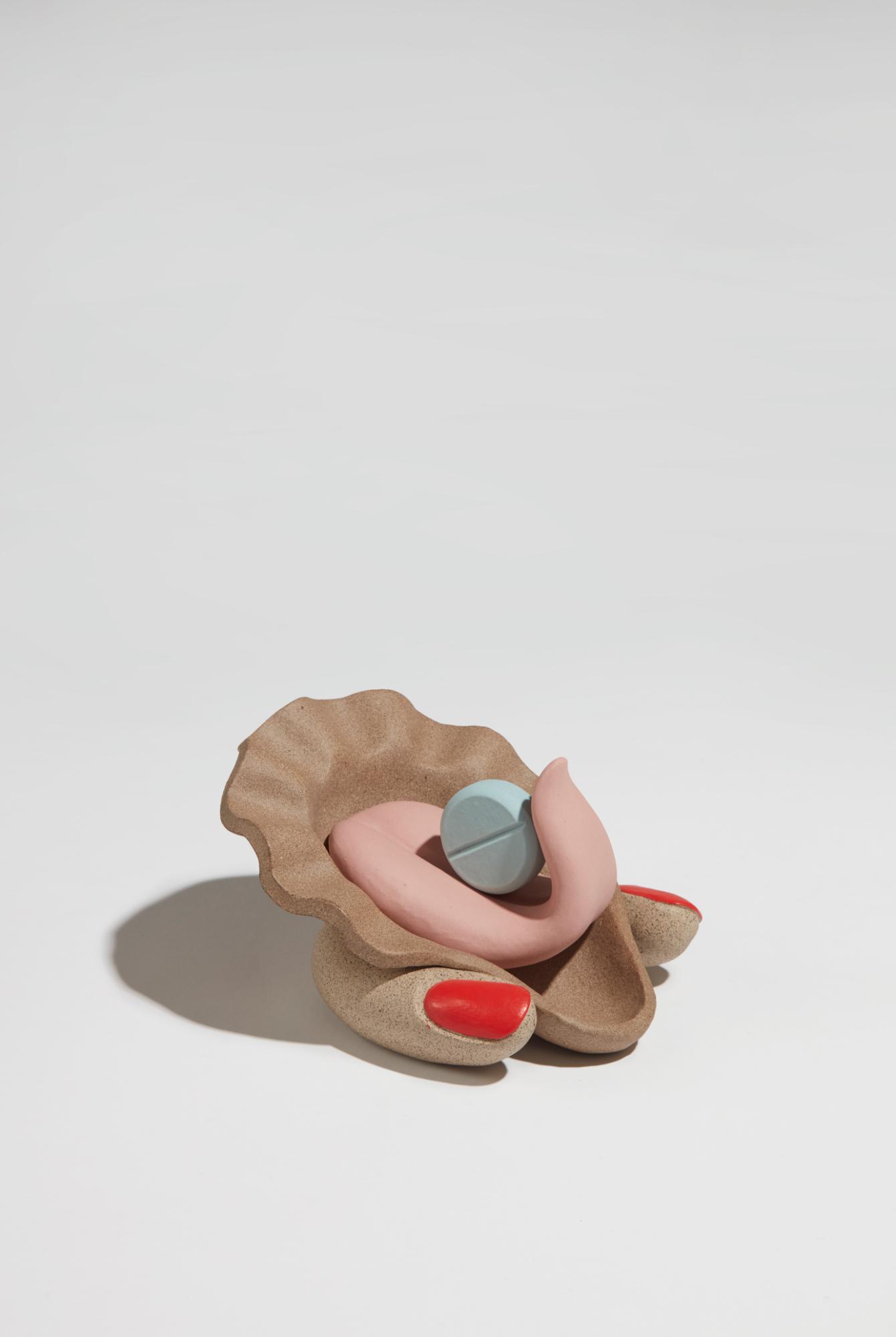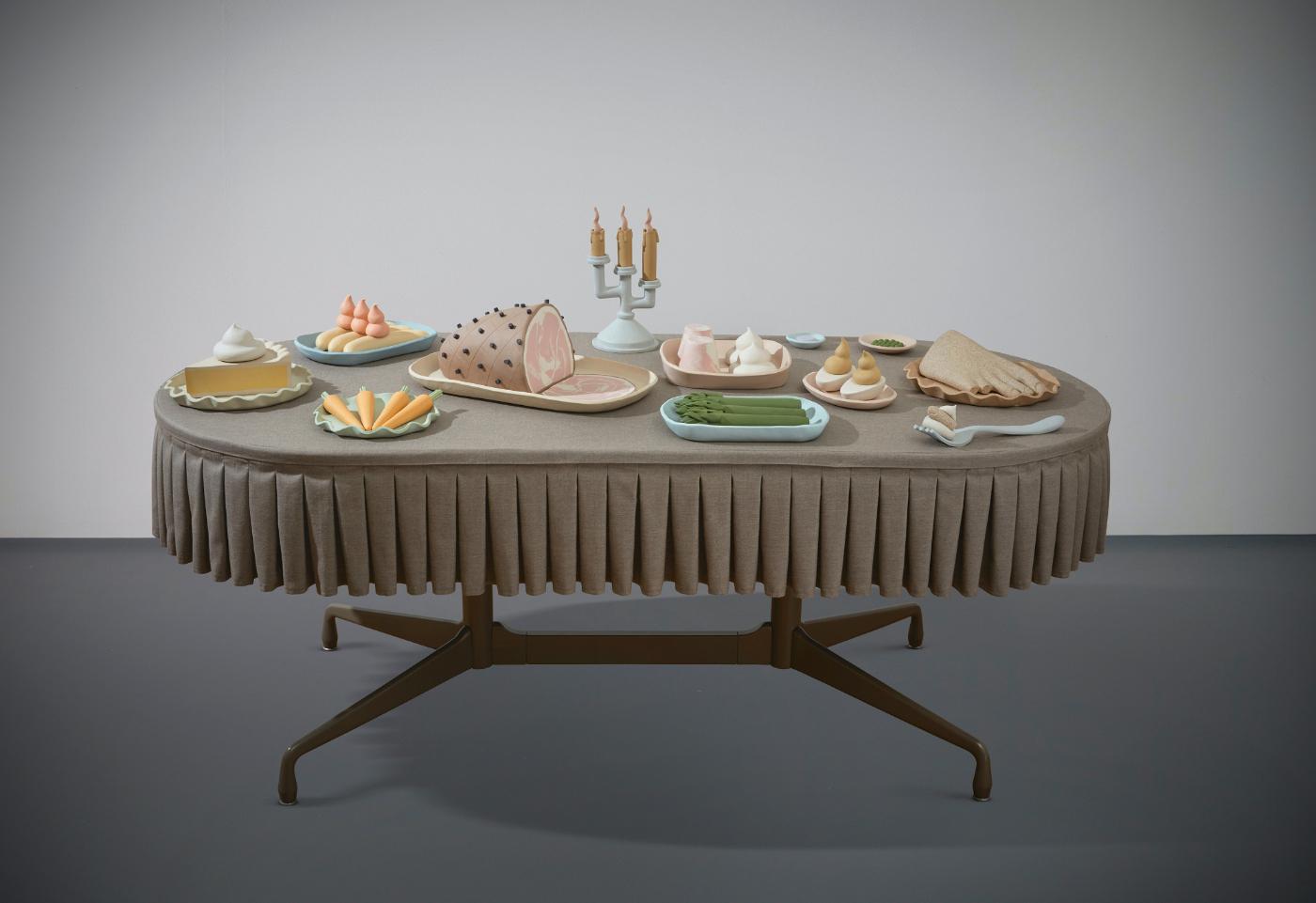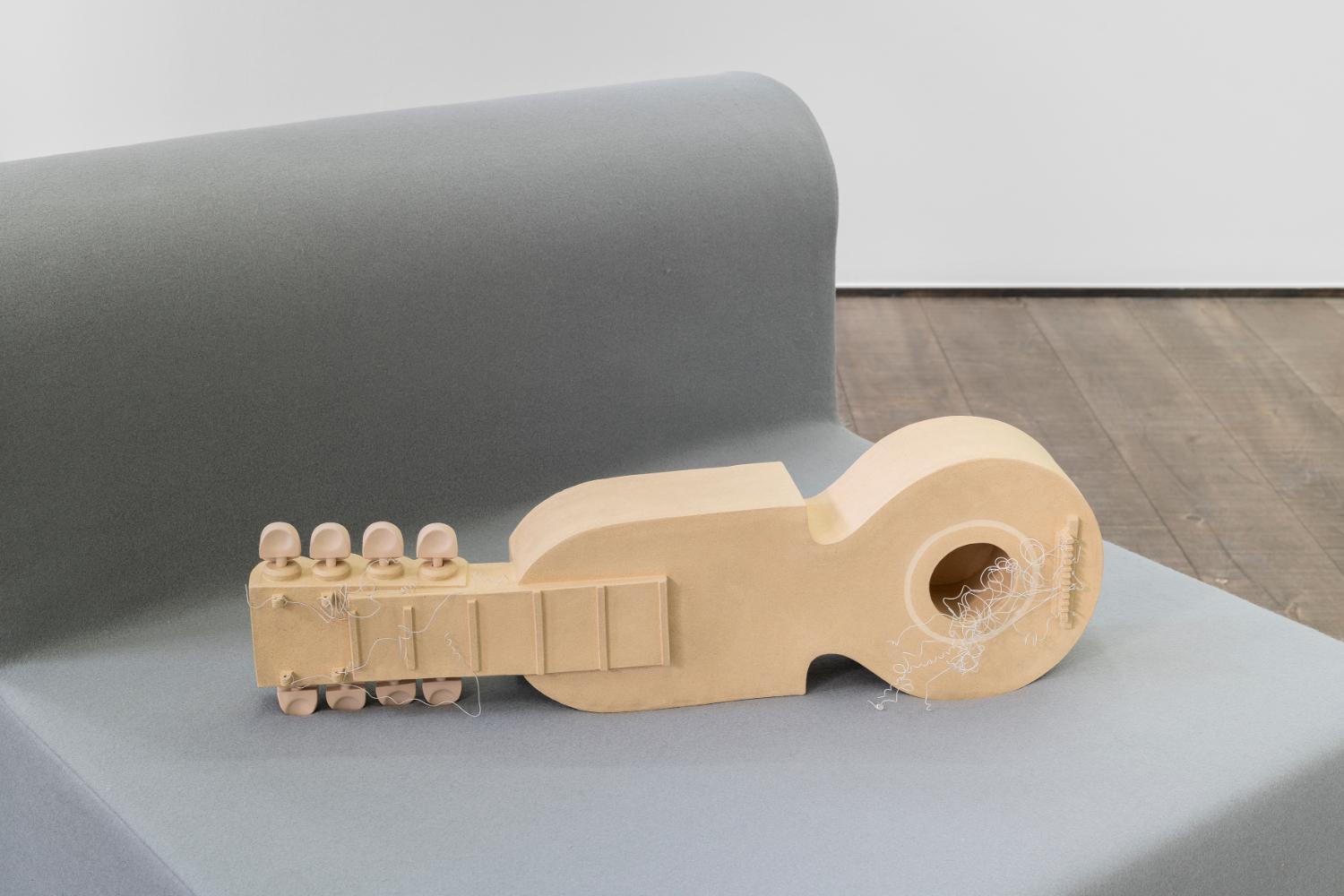Paul Laster: After studying animation and fashion design in undergrad, how did you come to making ceramics and sculpture?
Genesis Belanger: I applied to grad school at New York’s Hunter College with a painting portfolio, but knew right away that I’d be happier making three-dimensional work. Hunter has one of those programs where you don’t have to choose a major, even though you apply with a concentrated body of work. Once I was there, I started making sculpture and experimenting with all kinds of materials. My studio was right next to the kiln so I experimented with ceramics, as well. However, I didn’t do ceramics again until a few years after grad school, when I bought my own small kiln. As soon as I got it, I transitioned into ceramics full time.
PL: How do you see your past interests, along with your more recent employment in advertising as a prop maker, informing your current work?




